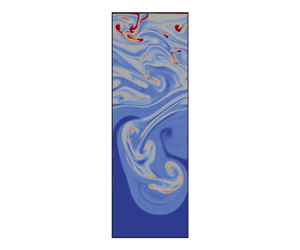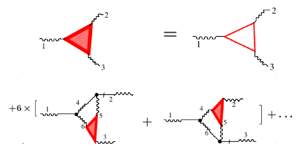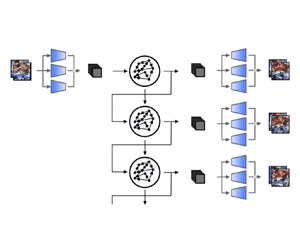Refine listing
Actions for selected content:
1418670 results in Open Access
Introduction to the issue
-
- Journal:
- Politics and the Life Sciences / Volume 42 / Issue 2 / Fall 2023
- Published online by Cambridge University Press:
- 15 November 2023, pp. 167-168
-
- Article
- Export citation
Living and Working at the Edges: Practices of Migrant Shopkeepers in the UK - Suzanne M. Hall, The Migrant’s Paradox. Street Livelihoods and Marginal Citizenship in Britain (Minneapolis, University of Minnesota Press, 2021, 217 p.)
-
- Journal:
- European Journal of Sociology / Archives Européennes de Sociologie / Volume 64 / Issue 3 / December 2023
- Published online by Cambridge University Press:
- 15 November 2023, pp. 468-474
-
- Article
- Export citation
Interacting density fronts in saturated brines cooled from above
-
- Journal:
- Journal of Fluid Mechanics / Volume 975 / 25 November 2023
- Published online by Cambridge University Press:
- 15 November 2023, A5
-
- Article
-
- You have access
- Open access
- HTML
- Export citation
Born Apart, but Raised Together: Twins Delivered in Different Countries/Twin Research Reviews: Hallermann-Streiff Syndrome in Monozygotic (MZ) Twins; Effects of Technology on Conjoined Twin Separation; Reciprocal DIEP Transplantation Between MZ Twins; Guidelines for Multifetal Management/Media Reports: Book by World’s Oldest Auschwitz-Birkenau Twin Survivor; Passing of Ian Wilmut; Zhores Medvedev Was an Identical Twin; More Gay Fathers with Twin Sons; Twins and Siblings Admitted to Medical School; First and Fourth Records for Major League Baseball Twins
-
- Journal:
- Twin Research and Human Genetics / Volume 26 / Issue 6 / December 2023
- Published online by Cambridge University Press:
- 15 November 2023, pp. 381-388
-
- Article
-
- You have access
- HTML
- Export citation
Nutritional considerations in major depressive disorder: current evidence and functional testing for clinical practice
-
- Journal:
- Nutrition Research Reviews / Volume 38 / Issue 1 / June 2025
- Published online by Cambridge University Press:
- 15 November 2023, pp. 25-36
-
- Article
-
- You have access
- Open access
- HTML
- Export citation
Perception towards palliative care among patients with pulmonary hypertension in malaysia: a correlation with disease status
-
- Journal:
- Cardiology in the Young / Volume 34 / Issue 4 / April 2024
- Published online by Cambridge University Press:
- 15 November 2023, pp. 900-905
-
- Article
- Export citation
Neurodevelopment outcomes in the first 5 years of the life of children with transposition of the great arteries surgically corrected in the neonatal period: systematic review and meta-analysis
-
- Journal:
- Cardiology in the Young / Volume 33 / Issue 12 / December 2023
- Published online by Cambridge University Press:
- 15 November 2023, pp. 2471-2480
-
- Article
- Export citation
Linear fractional self-maps of the unit ball
- Part of
-
- Journal:
- Canadian Mathematical Bulletin / Volume 67 / Issue 2 / June 2024
- Published online by Cambridge University Press:
- 15 November 2023, pp. 458-468
- Print publication:
- June 2024
-
- Article
- Export citation
A view from outside: sovereign CDS volatility as an indicator of economic uncertainty
-
- Journal:
- Macroeconomic Dynamics / Volume 28 / Issue 7 / October 2024
- Published online by Cambridge University Press:
- 15 November 2023, pp. 1423-1450
-
- Article
-
- You have access
- Open access
- HTML
- Export citation
PLS volume 42 issue 2 Front matter
-
- Journal:
- Politics and the Life Sciences / Volume 42 / Issue 2 / Fall 2023
- Published online by Cambridge University Press:
- 15 November 2023, pp. f1-f4
-
- Article
-
- You have access
- Export citation
Community Based Natural Resources Management in Botswana
-
- Journal:
- Journal of African Law / Volume 68 / Issue 1 / February 2024
- Published online by Cambridge University Press:
- 15 November 2023, pp. 59-72
- Print publication:
- February 2024
-
- Article
-
- You have access
- Open access
- HTML
- Export citation
BETWEENNESS ALGEBRAS
- Part of
-
- Journal:
- The Journal of Symbolic Logic , First View
- Published online by Cambridge University Press:
- 15 November 2023, pp. 1-25
-
- Article
-
- You have access
- Open access
- HTML
- Export citation
Energy flux and high-order statistics of hydrodynamic turbulence
-
- Journal:
- Journal of Fluid Mechanics / Volume 975 / 25 November 2023
- Published online by Cambridge University Press:
- 15 November 2023, A17
-
- Article
- Export citation
In memoriam: Roger D. Masters (1933–2023)
-
- Journal:
- Politics and the Life Sciences / Volume 42 / Issue 2 / Fall 2023
- Published online by Cambridge University Press:
- 15 November 2023, pp. 322-323
-
- Article
-
- You have access
- HTML
- Export citation
Predicting turbulent dynamics with the convolutional autoencoder echo state network
-
- Journal:
- Journal of Fluid Mechanics / Volume 975 / 25 November 2023
- Published online by Cambridge University Press:
- 15 November 2023, A2
-
- Article
-
- You have access
- Open access
- HTML
- Export citation
Mechanical actuation via resorbable materials
- Part of
-
- Article
- Export citation
Theory Choice as Niche Construction: The Feedback Loop between Scientific Theories and Epistemic Values
-
- Journal:
- Philosophy of Science / Volume 91 / Issue 3 / July 2024
- Published online by Cambridge University Press:
- 15 November 2023, pp. 741-758
- Print publication:
- July 2024
-
- Article
-
- You have access
- Open access
- HTML
- Export citation
On Stephen Houlgate's Hegel on Being
-
- Journal:
- Hegel Bulletin / Volume 44 / Issue 3 / December 2023
- Published online by Cambridge University Press:
- 15 November 2023, pp. 492-502
- Print publication:
- December 2023
-
- Article
- Export citation








